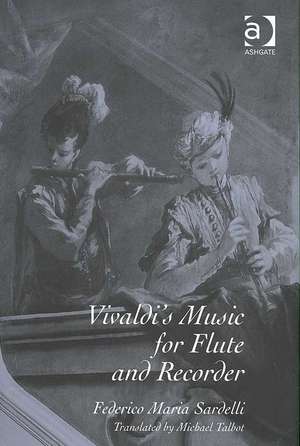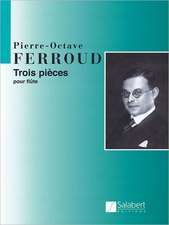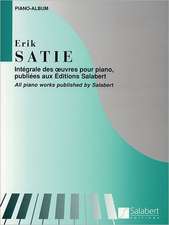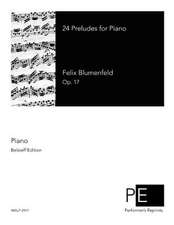Vivaldi's Music for Flute and Recorder
Autor Federico Maria Sardelli, Michael Talboten Limba Engleză Hardback – 5 apr 2007
Preț: 821.82 lei
Preț vechi: 1141.60 lei
-28% Nou
Puncte Express: 1233
Preț estimativ în valută:
157.27€ • 170.78$ • 132.11£
157.27€ • 170.78$ • 132.11£
Carte tipărită la comandă
Livrare economică 22 aprilie-06 mai
Preluare comenzi: 021 569.72.76
Specificații
ISBN-13: 9780754637141
ISBN-10: 075463714X
Pagini: 376
Dimensiuni: 156 x 234 x 25 mm
Greutate: 0.56 kg
Ediția:New.
Editura: Taylor & Francis
Colecția Routledge
Locul publicării:Oxford, United Kingdom
ISBN-10: 075463714X
Pagini: 376
Dimensiuni: 156 x 234 x 25 mm
Greutate: 0.56 kg
Ediția:New.
Editura: Taylor & Francis
Colecția Routledge
Locul publicării:Oxford, United Kingdom
Cuprins
Contents: Preface; Translator's note. Part I The Recorder and Flute in Italy in Vivaldi's Time: The emancipation of the recorder and flute; Straight and cross flutes; The recorder and flute in Venice: the rôle of amateur players; The recorder and flute in Venice: the first professional players; Other players of the recorder and flute associated with Vivaldi; Missing workshops and instruments. Part II Vivaldi's Music for Recorder and Flute: Vivaldi's sonatas for recorder and flute; Vivaldi's chamber concertos with recorder or flute; Vivaldi's flute concertos; Vivaldi's recorder concertos; Vivaldi's concertos for flautino; The concerto for two flutes; The concertos with multiple soloists and orchestra; The recorder and flute in Vivaldi's vocal music; Remarks on instrumental technique; Conclusions; Postscript: a late discovery; Inventory of the works for recorder and flute by Antonio Vivaldi; Bibliography; Indexes.
Notă biografică
Federico Maria Sardelli - conductor, musicologist and flautist - is a member of the Istituto Italiano Antonio Vivaldi, Venice. Michael Talbot is Emeritus Professor of Music at the University of Liverpool, UK.
Recenzii
'Federico Maria Sardelli’s comprehensive study of this sector of Vivaldi’s oeuvre, first published in Italian in 2001, brings its riches to the English-speaking world through a thoughtful translation by Michael Talbot. The repertory itself is a miscellany of sonatas and concertos plus an array of obbligato parts in operas and church music, but Sardelli holds that it plays a central role in the development of wind music in late Baroque Europe. Bringing his own insights as a performer to individual works, he deduces that Vivaldi played many of the instruments for which he scored. He discusses subtleties of nomenclature and scoring, offers extensive detail of the musical sources, surveys issues of performance in several locales, and deduces from the available evidence the types and sizes of instruments intended for each of the works. The whole book is generously provided with illustrations and musical examples. In Sardelli’s own phrase, it emphasizes data, documents, and commentary. The text has been updated to accommodate recent discoveries.' Eleanor Selfridge-Field, Stanford University, USA ’...this is a major contribution to Vivaldi studies...Highly recommended.’ Choice ’...the reader is fortunate in that so fine a book has been translated by so distinguished a scholar, a fact that itself lends it authority... The author knows the sources, he knows the music, and knows what needs to be written... if only such books existed on other distinct repertoires - and not just Vivaldi. There is such a wealth of information and understanding that I can make this a very short review, and just recommend it to all who play the music [...] and those who write about it.’ Early Music Review ’Vivaldi scholar Michael Talbot has done a noble service to the English-speaking world in making this 2001 work (published in Italian) accessible... If you want to know about Vivaldi's works for flute, this is the book!’ Kansas City Flute Association Newsletter ’
Descriere
Federico Maria Sardelli writes from the perspective of a professional baroque flautist as well as that of a scholar, in order to shed light on the often bewildering various sizes and tunings of the recorder and transverse flute families as they relate to Antonio Vivaldi's compositions. Sardelli draws on primary documents to analyse the capable and progressive instrument technique in Vivaldi's music. This new English edition includes a discussion of the much-disputed chronology of Vivaldi's works, and will therefore appeal to Vivaldi scholars in general as well as to those with a particular interest in recorders and flutes.











